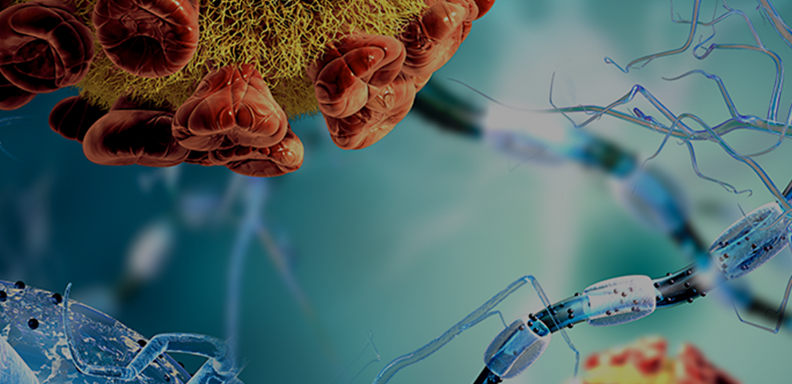A new study by ecologists at the University of Chicago shows that the genes present in a microbial community can predict the community's dynamic metabolic activity, with implications for the nitrogen cycle and other important biogeochemical processes.
The study, published January 26, 2022 in Cell, shows that the metabolic genes in a community can predict its dynamic behavior, raising the possibility that scientists could infer metabolite dynamics from the community’s aggregate gene content, design microbial communities for specific functions, and discover how genome evolution impacts metabolism.
We often think of bacteria in terms of the effect of individual species on the human body. Streptococcus can give you a sore throat and fever, or too much of the wrong kind of E. coli can give you food poisoning. But the natural world is filled with bacteria that perform all kinds of crucial functions for the environment, like photosynthesis to fix carbon and produce oxygen, or pulling nitrogen out of the atmosphere and turning it into a form that other organisms can use. These bacteria in nature don’t exist in a vacuum, however; they occur in ecological communities, interacting with countless other microbes, and competing for and swapping nutrients with each other.
Karna Gowda, PhD, a postdoctoral scholar in the Department of Ecology & Evolution and Center for Physics of Evolving Systems at UChicago and lead author of the new study, said this complexity poses a thorny problem for scientists. “Microbial communities are complicated because the organisms are constantly sensing and responding to their environments, interacting, and co-evolving,” he said. “It’s a long-standing problem in microbial ecology. How do you make sense of the aggregate metabolic activity of a community from the simple parts--the genes and organisms--that are present?”
To approach this problem, Gowda and his advisors, Seppe Kuehn, PhD, Assistant Professor of Ecology and Evolution at UChicago, and Madhav Mani, PhD, Assistant Professor of Engineering Sciences and Applied Mathematics at Northwestern University, were inspired by recent studies suggesting that there are strong statistical relationships between metabolites present in an environment and the community gene content. Since metabolite levels in natural environments are the result of a give and take between a community and its non-living chemical and physical components (e.g. photosynthetic organisms can produce oxygen, but oxygen can also diffuse into a community from the atmosphere), it is hard to draw conclusions about the relationship between gene content and community metabolic activity from these studies alone. Therefore, making this connection would first require taking natural communities into the lab.
Gowda and his colleagues took soil samples from farmlands and forests around Urbana, Illinois, and brought nearly one hundred diverse bacteria from them into the lab. They then sequenced their genomes to get a catalog of all the genes present and measured changes in metabolites during the growth of these organisms, focusing on the process of denitrification, a key branch of the nitrogen cycle. Statistical analysis of these data showed that there were relatively simple relationships between key genes involved in denitrification and the rates at which they consumed and produced denitrification metabolites. They then constructed a mathematical model that captured how the different organisms interacted with each other (i.e., by consuming and sharing resources with each other). That model allowed the researchers to predict the overall dynamics of denitrification in community by essentially connecting the genes to collective behavior.
“The relationship between community gene content and metabolic activity was a lot simpler than we previously thought possible,” Gowda said.
There is still more work to do to see if these insights hold up in more complex natural environments. The experiments that Gowda and colleagues performed were in highly controlled conditions, a far cry from the heterogeneous and fluctuating conditions of soils and aquatic environments. But Gowda said this study opens the door to the possibility that predicting the chemical dynamics of a natural environment could be as simple as sequencing its genome.
“Perhaps one day we could use this information to design microbial communities with particular goals in mind, like for use in wastewater treatment or farming,” he said. “It would be a huge advance if we could understand what's happening to metabolites in natural environments just from sequencing data.”
The study, “Genomic structure predicts metabolite dynamics in microbial communities,” was supported by the National Science Foundation, the James S. McDonnell Foundation, and the Simons Foundation. Additional authors include Derek Ping from the University of Illinois at Urbana-Champaign (now at Purdue University), Madhav Mani from Northwestern University, and Seppe Kuehn from the University of Chicago.



